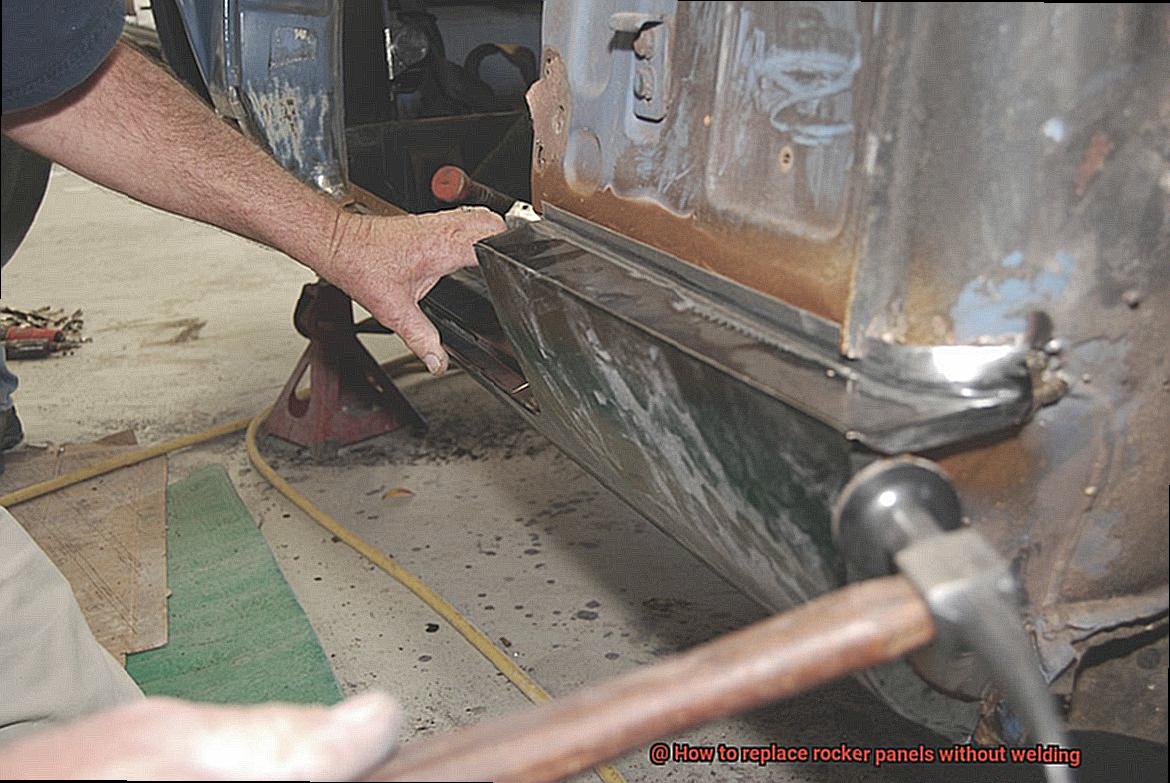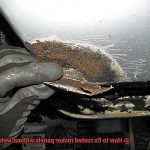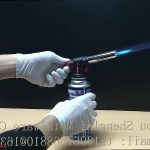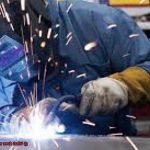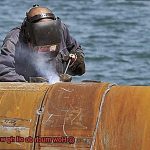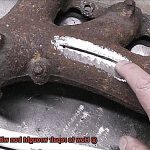Are you tired of driving around with a rusty and unsightly rocker panel on your car?
Fear not. You don’t have to spend a fortune at the auto repair shop or invest in a welding kit.
There are alternative methods to replace rocker panels without welding, and we’re here to guide you through it. Rocker panels play a crucial role in safeguarding the lower part of your car’s body from damage and corrosion.
Unfortunately, they often fall victim to rust, debris, and other forms of wear and tear, leading to an unappealing appearance and jeopardizing your vehicle’s structural stability. In this post, we’ll provide you with a step-by-step guide on how to replace your car’s rocker panels without using welding techniques.
We’ll cover everything from the necessary tools and materials to preparation, installation, and finishing touches. Our recommended methods involve using adhesives, rivets, screws, and clamps – all affordable and readily available options.
Our goal is for you to feel confident and empowered enough to take on this DIY project even if you lack prior experience. Whether you’re an avid car enthusiast or just trying to save some money, we’ve got you covered.
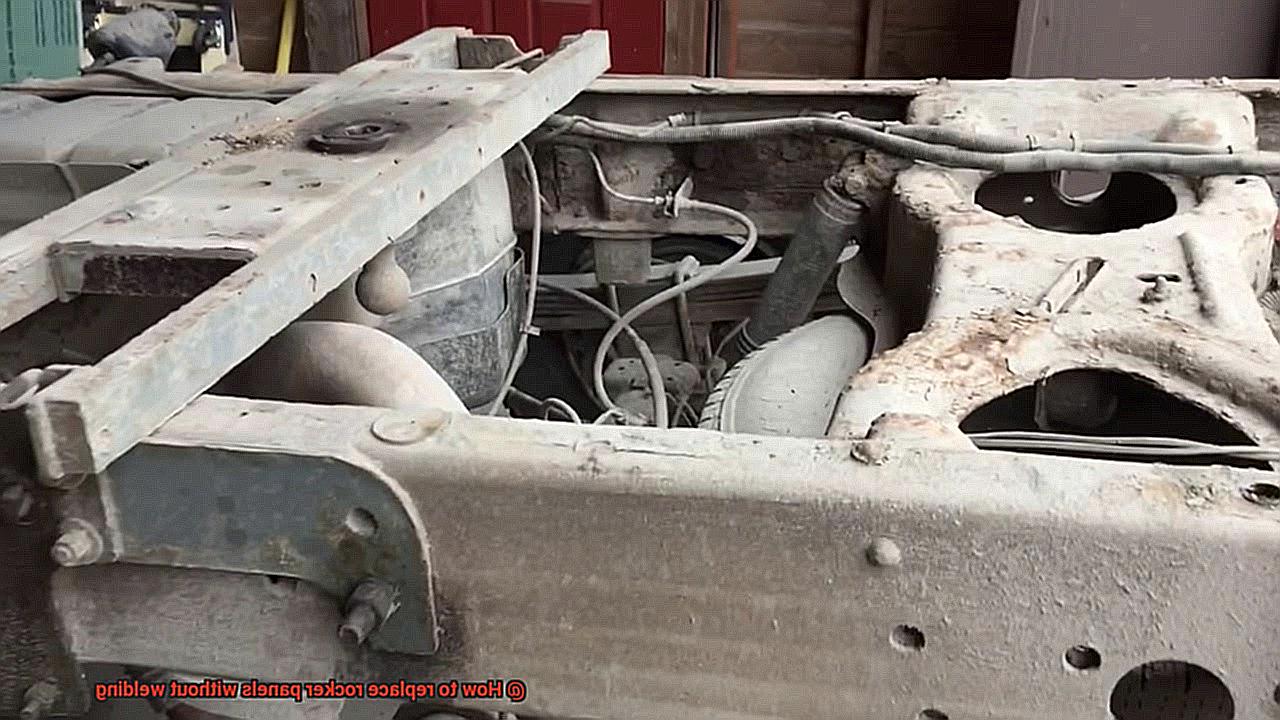
So, let’s find out.
What are Rocker Panels?
Contents
- 1 What are Rocker Panels?
- 2 Reasons to Replace Rocker Panels without Welding
- 3 Tools Needed for Replacing Rocker Panels without Welding
- 4 Step by Step Guide to Replacing Rocker Panels without Welding
- 4.1 Step 1: Remove the Old Rocker Panel
- 4.2 Step 2: Clean the Area
- 4.3 Step 3: Apply Adhesive
- 4.4 Next, apply an automotive adhesive to the back of the replacement rocker panel. Follow the manufacturer’s instructions for application and drying time, and apply the adhesive evenly across the panel to ensure a strong bond. Step 4: Position the New Panel
- 4.5 Step 5: Allow Adhesive to Dry
- 4.6 Step 6: Finish and Paint
- 5 Advantages of Replacing Rocker Panels without Welding
- 6 Disadvantages of Replacing Rocker Panels without Welding
- 7 Conclusion
In fact, rocker panels play a vital role in maintaining your car’s overall structure and protection. Think of them as the foundation of your vehicle – they provide essential support to the car’s frame and help keep it all together.
Plus, they shield the interior from dirt and debris that could be kicked up from the road. Typically constructed from durable steel or aluminum, rocker panels are in constant contact with the ground and are therefore prone to rusting.
This can quickly eat away at these critical components, leading to potentially dangerous safety issues if left unchecked. Replacing rocker panels can seem like a daunting task, especially if welding is involved.
But fear not – there are alternative methods for replacing these panels that may save you time and money. For example, you could use adhesive or sealant to attach new rocker panels, which are easy to apply and provide a strong bond to the car body.
Alternatively, bolts and screws can be used to secure them in place. It’s worth noting that these solutions may not be permanent fixes, and it’s essential to address any underlying issues that caused the rust in the first place.
Additionally, some states require welding for a vehicle inspection. To sum it up, rocker panels are critical components of your vehicle’s structure and protection.
While they may rust easily, there are alternative methods for replacing them without welding.
Reasons to Replace Rocker Panels without Welding
Rocker panels are the unsung heroes of your car, safeguarding it against harmful elements like mud, rocks, and salt.
But over time, these panels can succumb to rust, compromising your car’s safety. When it comes to repairing or replacing rusted rocker panels, welding may not be the best solution.
In fact, there are several compelling reasons why you should consider replacing your rocker panels without welding. Firstly, welding can be a daunting task that requires specialized equipment and training, making it an expensive option.
If you don’t have access to these resources or lack confidence in your welding skills, replacing rocker panels without welding is a more convenient and budget-friendly choice. Furthermore, welding can often lead to additional damage to the surrounding areas of your vehicle.
The high heat generated during welding can warp or distort the metal, resulting in more problems later on. By replacing rocker panels without welding, you sidestep this risk altogether.
Another benefit of replacing rocker panels without welding is that it offers more customization options. If you’re looking to jazz up your ride with unique designs or patterns on your replacement rocker panels, it’s much easier to do so without the limitations of welding.
Lastly, replacing rocker panels without welding is often a quicker process than traditional welding methods. This means less downtime for your vehicle and a speedy return to the road.
Replacing rocker panels without welding presents numerous advantages over traditional welding methods. Whether you’re on a tight budget or lack expertise in welding, this option can be an excellent choice for repairing and upgrading your vehicle.
Tools Needed for Replacing Rocker Panels without Welding
Rust can be a real nightmare, and welding rocker panels may not always be the best option.
Fortunately, replacing rocker panels without welding is a cost-effective and straightforward solution that also allows for customization. To get started, you’ll need several essential tools.
First on the list is a reciprocating saw with a metal-cutting blade or an angle grinder with a cutting wheel to remove the old rocker panels. While both options work, a reciprocating saw is faster and creates fewer sparks, making it the better choice.
Next up is a drill with a drill bit to remove any spot welds holding the old panel in place. Alternatively, you can use a chisel or punch, but be careful not to damage the surrounding metal.
After removing the old panel, it’s time to reshape any damaged metal using either a pneumatic hammer or hammer and dolly set. This step ensures that the new rocker panel fits correctly and looks seamless.
Once the metal is reshaped, use panel adhesive to attach the new panel to your car’s body. This adhesive is strong enough to hold the new panel in place without welding but takes longer to dry.
Be patient and wait for it to dry completely before moving on to the next step. Lastly, paint the new rocker panel to match your car’s color using either a paint gun or spray can.
This step is crucial for making your car look seamless and professional after replacing the rocker panels. Overall, these tools are essential for replacing rocker panels without welding.
With some basic knowledge of car repair and these tools at hand, you can easily replace your rocker panels yourself instead of paying someone else to do it for you.
Step by Step Guide to Replacing Rocker Panels without Welding
With our step-by-step guide, you can replace your rocker panels without welding and give your car a fresh new look.
Step 1: Remove the Old Rocker Panel
The first step is to remove the old rocker panel. This can be achieved with a reciprocating saw or angle grinder, but don’t forget to protect yourself with gloves, eye protection, and a face mask.
Step 2: Clean the Area
Once the old rocker panel has been removed, it’s time to clean the area thoroughly.
Use a wire brush or sandpaper to remove any rust or debris. It’s crucial to ensure that the area is completely dry before moving on to the next step.
